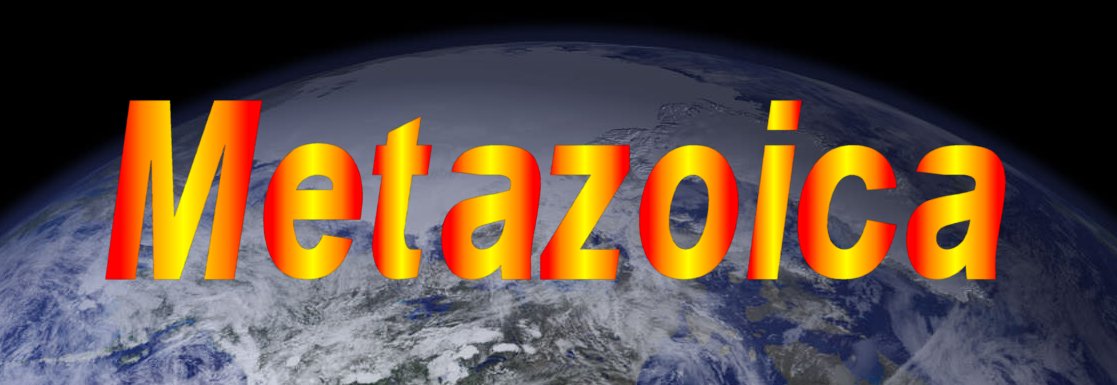Welcome to my Metazoic site! This site discusses the existence of the creatures to come along after humans will be extinct. I first became interested in a world after man when I acquired my first copy of Dougal Dixon's After Man: A Zoology of the Future in 1992. However, I unwittingly created creatures that did not exist from the time I was about 8 years old. But it was after I obtained a copy of that book (now a collector's item) that I decided to take these same creatures I created as a child and make them more realistic in an evolutionary sense. Though it may be hard for a lot of us to grasp, humans will soon become extinct. One of the biggest factors of how this will happen is the current overpopulation rate. Which is why I don't contribute to the population. I created this world with little more than mammals fulfilling all ecological niches with the help of some friends. I even gave the era of the age after man a name, I called it the Metazoic, derived from the words for "After-era" (Meta, meaning after, and zoic meaning era). We are now in the Cenozoic era. To view all the animals I have created since I began this project, you can go to the "Meet the Mammals" section of this site. To discuss your own ideas about what you think will happen in the future world, and share your ideas with others, please feel free to leave a comment.
One more thing, some of you may find this site quite offensive, and you have a right to your own opinion. But please respect my right to have an opinion too. I'm not saying there is no GOD, I believe it was HIM who got the ball rolling. But I believe after that, evolution took over. There is so much more evidence of evolution than there is of creation. Even that going on right under our noses. Other than that, enjoy yourself and visit our many links.
Monday, December 22, 2008
Family of the Week: The Gerbbucks
The largest species in this family are among the genus Tragerbillus. Many of these species can reach a height of about 10 feet. They are one of the few gerbbuck species that lives in dense rainforests. They are also the only gerbbuck species that has only 2 toes on the feet. One very long one, tipped with a 5-inch long, razor-sharp claw, and the outside toes are very short with a shorter, more blunt claw. These animals use these huge claws on the inside toes as weapons against predators. Properly aimed, they can actually disembowel a predator, using the tail to stand back on, as they reach their feet up and kick at a predator. The hands are equipped with 4 short fingers. The ears of this species are diamond-shaped and not as large as those on Adillus. The eyes are large and almond-shaped.
Brachiomillops is the most unusual of these animals, it is the closest one to being a quadruped. They have arms as long as their legs and sometimes travel using all fours or on their legs only. If they need a quick get-away they usually sprint off on all fours, using leaping and long strides to get way ahead of whatever startles them. If they are just running, or going after each other, or walking, they usually balance up on their hind legs, looking like ostriches with long tails to help them keep their balance.
The smallest species are in the genus Adillulus, particularly the Malaysian species. They are small and rather rat-like. The tail is well furred, but thin. The ears are small, but triangular-shaped. They live in mostly cloud forests and dig their own burrows to roost in, using their hind legs to clear away the dirt. They live in small family groups of no more than about 10 individuals, and their babies. Like all smaller rodents in the Metazoic, these animals are prolific breeders.
I have not yet started working on this group, but there is a place for it once I am done. This is one of the few cases I tolerate "mutt-names" among animals of the future, when it ends in "buck" or "bok", since even now a lot of ungulates have names that end with that suffix. Since these animals still resemble large versions of modern gerbils in a lot of ways, that is how I came up with the collective name "gerbbuck" for the animals in this family.

No comments:
Post a Comment